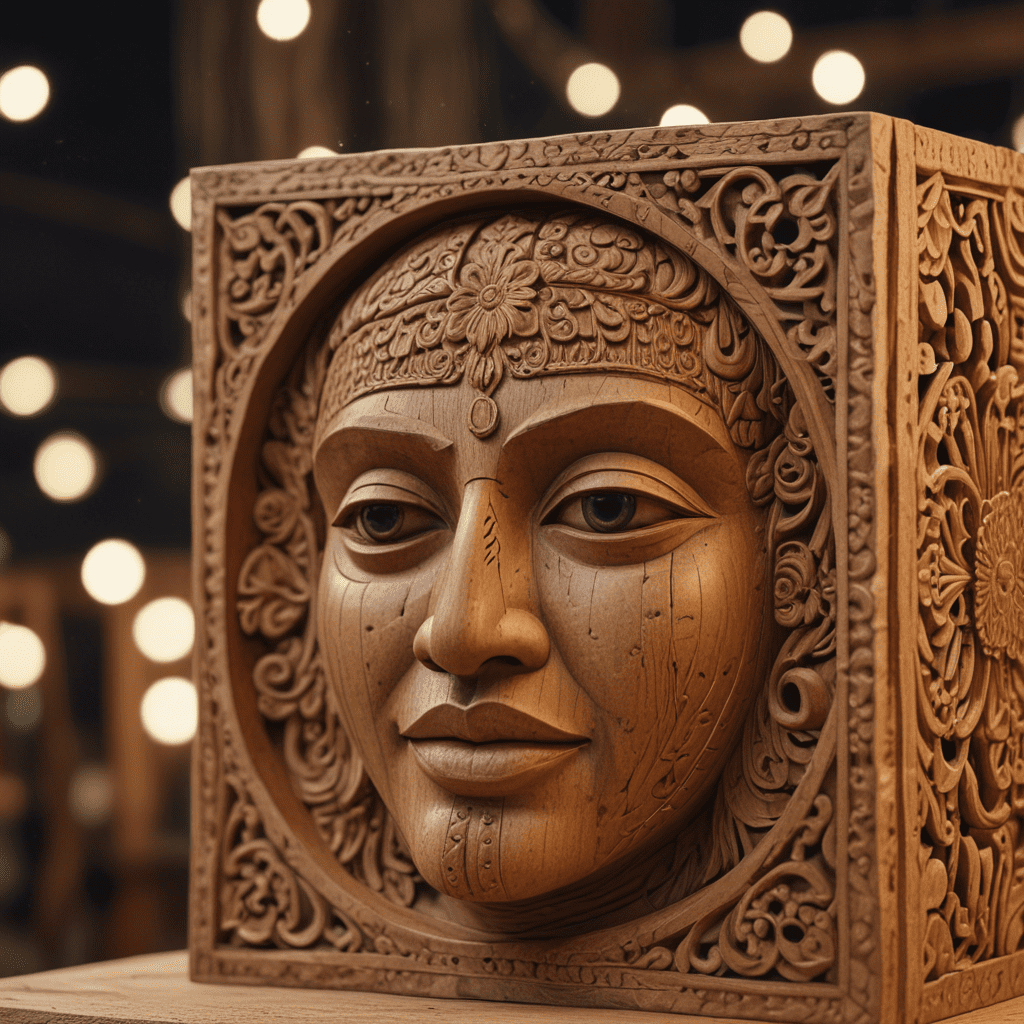Introduction to Traditional Wood Carving in Bangladesh
Bangladesh's rich cultural heritage boasts an array of exquisite traditional crafts, among which wood carving stands as a testament to the country's artistic prowess. Wood carving in Bangladesh has a long and storied history, with its roots deeply intertwined with the nation's architectural and decorative traditions. This ancient craft form continues to thrive today, adorning homes, temples, mosques, and other structures with intricate and captivating designs.
Historical Roots: The Origin of Wood Carving in Bangladesh
The origins of wood carving in Bangladesh can be traced back to ancient times, with evidence suggesting its practice as early as the 7th century. During the Pala dynasty, wood carving flourished as a medium for creating religious sculptures and architectural embellishments. The arrival of Islam in the 13th century further enriched the tradition, introducing new motifs and techniques influenced by Middle Eastern and Persian art. Over the centuries, wood carving has continued to evolve, reflecting the diverse cultural influences that have shaped Bangladesh's history.
Regional Variations: Wood Carving Styles Across Bangladesh
While wood carving in Bangladesh exhibits a common thread of artistry and craftsmanship, distinct regional variations have emerged over time. In the northern region of Rangpur, wood carvers are renowned for their intricate floral designs and geometric patterns, while in the southern region of Khulna, the emphasis is on bold, stylized motifs influenced by the region's shipbuilding tradition. Dhaka, the capital city, is known for its delicate and sophisticated carvings, often featuring human figures and intricate latticework. These regional variations add to the richness and diversity of wood carving in Bangladesh.
Materials and Techniques: The Tools and Process of Wood Carving
Wood carvers in Bangladesh typically use locally available wood species, such as jackfruit, mahogany, and rosewood, known for their durability and beautiful grain patterns. The carving tools include chisels, gouges, and knives, each designed for specific types of cuts and details. The carving process often begins with a sketched design, which is then transferred onto the wood using traditional measuring and transferring techniques. The carver then carefully removes wood from the surface, gradually shaping and refining the design with meticulous precision.
Motifs and Symbolism: The Meaning Behind Wood Carvings
Wood carvings in Bangladesh are not merely decorative embellishments but often carry profound cultural and religious significance. Common motifs include floral designs, geometric patterns, human figures, and scenes from everyday life. These motifs may symbolize fertility, prosperity, protection, or religious beliefs. For instance, the lotus flower is a prevalent motif, representing purity and spiritual enlightenment in Buddhism and Hinduism. The presence of intricate geometric patterns in Islamic architecture symbolizes the unity and harmony of the universe. By understanding the symbolism behind the carvings, one can gain a deeper appreciation of the rich cultural heritage embodied in this traditional craft form.
Traditional and Contemporary Uses: Wood Carving in Daily Life
Wood carving in Bangladesh extends beyond its artistic and decorative value, serving various practical and functional purposes. Intricate carvings adorn furniture, utensils, musical instruments, and other everyday objects, adding both beauty and functionality. In rural areas, wood carvings are often used to create decorative panels for houses, doors, and windows, providing ventilation and protection from the elements. Wood carvings also play a significant role in traditional ceremonies and festivals, adorning ritual objects and ceremonial masks.
Artisanal Communities: The Role of Wood Carvers in Bangladesh
Wood carving in Bangladesh is primarily practiced by skilled artisans who have inherited the craft from generations past. These artisans often form close-knit communities, where knowledge and techniques are passed down through apprenticeships. The artisans' deep understanding of wood properties and carving techniques enables them to create intricate and visually stunning masterpieces. By preserving traditional designs and techniques, these communities play a vital role in safeguarding Bangladesh's cultural heritage.
Preservation and Conservation: Efforts to Protect Traditional Wood Carving
The preservation and conservation of traditional wood carving in Bangladesh are of utmost importance to ensure its continuity for future generations. Several initiatives are underway to support and revitalize the craft. The government has established training centers and workshops to provide skilled artisans with the necessary resources and knowledge. Non-profit organizations and cultural institutions also play a crucial role in promoting wood carving, organizing exhibitions, and documenting the craft's historical significance.
Cultural Significance: Wood Carving as a Reflection of Bangladeshi Heritage
Traditional wood carving in Bangladesh is not merely a craft but an integral part of the nation's cultural fabric. It reflects the country's rich history, diverse traditions, and artistic sensibilities. Wood carvings adorn religious structures, historical monuments, and modern buildings, serving as a testament to the skill and creativity of Bangladeshi artisans. By preserving and promoting this traditional craft form, Bangladesh not only safeguards its cultural legacy but also contributes to the global appreciation of artistic diversity.
The Future of Traditional Wood Carving in Bangladesh: Challenges and Opportunities
The future of traditional wood carving in Bangladesh presents both challenges and opportunities. While the craft faces competition from modern manufacturing techniques and changing consumer preferences, there is a growing appreciation for handmade and sustainable products. To ensure the continued prosperity of wood carving, it is essential to support artisanal communities, promote traditional designs, and explore innovative applications of the craft. By embracing both tradition and modernity, Bangladesh can preserve its rich heritage while creating new opportunities for wood carvers and fostering a vibrant cultural landscape.
FAQs
Q: What types of wood are commonly used in Bangladeshi wood carving?
A: Wood carvers in Bangladesh typically use locally available wood species, such as jackfruit, mahogany, and rosewood, known for their durability and beautiful grain patterns.
Q: What are some of the common motifs found in Bangladeshi wood carvings?
A: Common motifs include floral designs, geometric patterns, human figures, and scenes from everyday life. These motifs may symbolize fertility, prosperity, protection, or religious beliefs.
Q: How can I support the preservation of traditional wood carving in Bangladesh?
A: You can support the preservation of traditional wood carving in Bangladesh by purchasing products made by skilled artisans, attending exhibitions, and advocating for initiatives that promote the craft and its cultural significance.



